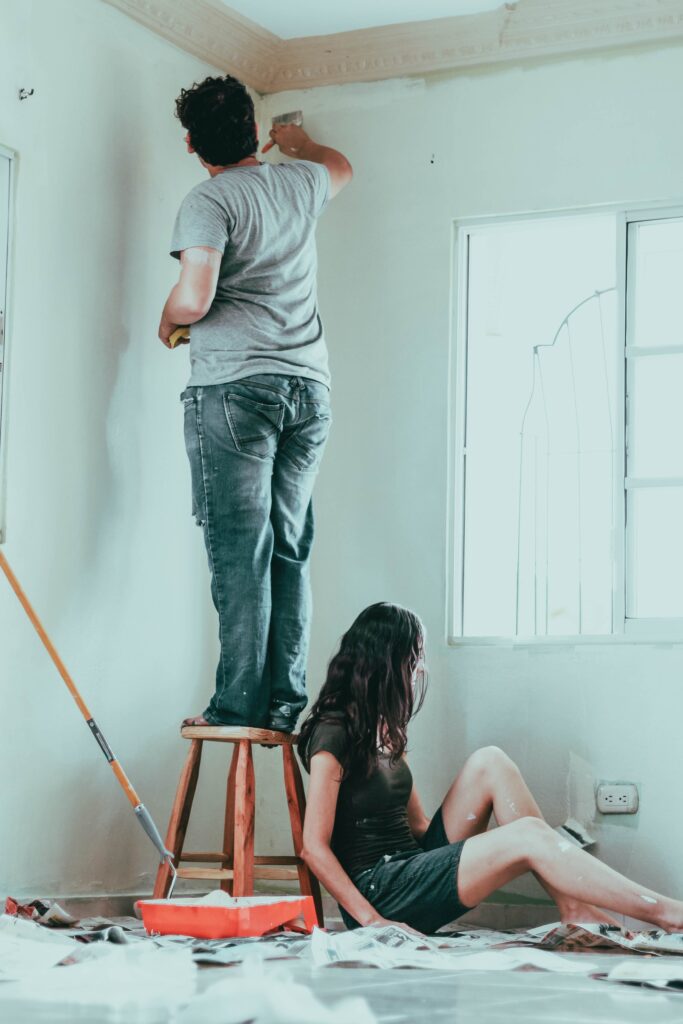High-quality brushes and rollers
If you’ve decided to do some DIY painting, our first piece of advice is to invest in high-quality brushes and rollers. Cheap rollers can often leave behind fuzz and lint, which will leave you with a rough surface that not only looks bad but is also hard to fix later on. Bad brushes leave streak marks, so buy higher-quality ones. After your purchase, take good care of your items.
High-quality paint
When purchasing paint, don’t always go for the cheapest option. High-quality color can drastically change the way your paint job turns out. It will be easier to apply, and paired with good rollers and brushes, and it will leave you with a perfect, smooth finish

Use painter’s tape
Using painter’s tape is what will make your walls look like they were done by a professional. Painter’s tape is not expensive, considering how much it makes the job easier. Using this tool ensures a straight line, prevents overlapping, and means you don’t have to worry about being too precise when painting around the edges of the ceiling or any hardware you have. You can also use painter’s tape to get creative and create an accent wall with different designs.
Keep a wet edge
If you want to avoid having overlap marks show on your walls, then make sure to always leave a wet edge. Overlap marks form when you paint over a layer that’s already half-dry. Make sure that your roller goes over the edge of the previous stroke before the paint begins to dry, and that’s how you will ensure an even and clean finish.
Use feathering to avoid lap marks
If you’re painting a large surface, for example, a very tall wall, it can be hard to maintain a wet edge. A better technique to use is called “feathering.” Feathering simply means putting on a thin layer of paint with a drag brush to spread it equally. This way, when you put on another layer, there won’t be as much buildup that can cause marks to appear.
However, if this seems like too much work, you can always hire professionals to finish your work for you. For example, this company for interior painting in Calgary offers individual services like ceiling painting, trim painting, and even drywall repairs. If you’re in doubt, hiring professional help may be better in the long run and will save you lots of time.
Buy the right amount of paint
Before you start your painting project, determine the right amount of paint you will need to buy and mix. Since color is mixed in the store, having to get a new bucket can mean you get a slightly different shade each time, which can be very noticeable on your walls. You can estimate by measuring out your walls and using one of many tools available online to help you calculate the right amount.
Use primer
If you’re painting over a wall that you had to previously fix or fill in any damages, it’s best that you use a primer before putting on your paint to avoid the texture showing on your walls.
Clean the walls before painting
For a clean application, make sure your walls are clean from grime, oil, and dirt before you start painting. The color won’t stick properly over a dirty surface, and it may cause your paint to chip and peel off earlier than you expect.
To clean your walls, use a deglosser or any other pre-paint cleaner and a cloth. Especially pay attention to places you often touch, such as around switches and walls in the kitchen that can get greasy pretty quickly.
